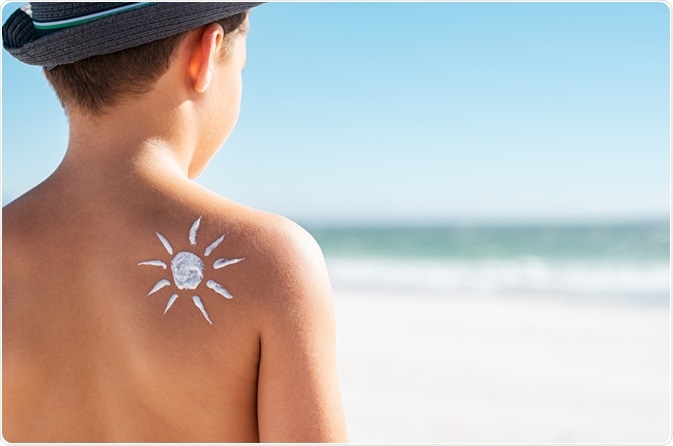Sunscreen is an essential commodity to protect the skin from harmful effects of ultraviolet (UV) rays. It is also used widely to prevent skin cancer. However, it is important to apply sunscreen appropriately to get its full benefits.

Image Credit: Rido/Shutterstock.com
Is sunlight always good?
Although sunlight is vital for many physiological functions, such as vitamin D synthesis and regulation of circadian rhythm, excessive exposure can lead to skin damage (sunburn), premature skin aging (wrinkles and age spots), and even skin cancer.
Ultraviolet rays (UVA and UVB) found in sunlight causes DNA damage in skin cells, making the skin susceptible to cancer. Also, having a history of sunburn can increase the risk of skin cancer.
Sunscreens are particularly vital for people who are at higher risk of developing skin cancer, which is the most common type of cancer in the US, affecting one in five people. Primarily, there are two types of skin cancers: melanoma and non-melanoma (basal cell carcinoma and squamous cell carcinoma).
In every year, melanoma skin cancer, which is the 19th most commonly occurring cancer, affects about 1,32,000 people; whereas, non-melanoma skin cancer, which is the 5th most commonly occurring cancer, affecting about 2 – 3 million people globally.

Image Credit: Africa Studio/Shutterstock.com
Why applying sunscreen is important?
The incidence of sunlight-induced skin damage and skin cancer can be reduced significantly by applying sunscreen before sun exposure. Daily use of SPF15 sunscreen can reduce the risks of squamous cell carcinoma and melanoma by 40% and 50%, respectively.
Active ingredients (filters) present in sunscreens can reflect or absorb the UV ray and prevent them from reaching the skin. There are two types of sunscreens: chemical sunscreen (organic compounds) and physical sunscreen (inorganic minerals).
Chemical sunscreens contain organic ingredients, such as oxybenzone and avobenzone, which absorb UV rays and generate a small amount of heat. Whereas, physical sunscreens contain inorganic minerals (zinc oxide and titanium dioxide) that mostly reflect or scatter the UV rays.
What is the best way to apply sunscreen?
If a person is mostly staying indoor and gets sun exposure only for a short while, a sunscreen with SPF15 or higher is sufficient to provide skin protection.
However, if staying outdoor for a long while, one should apply broad-spectrum (protection against both UVA and UVB), water-resistant sunscreens with SPF30 or higher. The number in SPF (sun protection factor) defines the duration the sun’s UVB rays will take to redden the skin when applying a sunscreen exactly as recommended compared to the duration without any sunscreen.
Sunscreen should be applied to all exposed body parts at least 15 – 30 minutes before sun exposure. Moreover, it should be reapplied every two hours while staying outdoors. To get the maximum benefit, one should apply one ounce of sunscreen to exposed body parts.
What are the most common sunscreen mistakes?
Despite knowing the benefits of sunscreen, many people do not get full protection because of the common mistakes they do while applying sunscreen.
According to the American Academy of Dermatology, broad-spectrum, water-resistant sunscreens with an SPF of 30 or higher give the maximum benefit.
Moreover, applying less than the recommended amount of sunscreen (one ounce) can make a person vulnerable to the harmful effects of sunlight. However, it has been found that the majority of people apply only 25 – 50% of the recommended amount.
Another major mistake people do is not applying sunscreen on a cloudy day. According to the American Academy of Dermatology, only 20% of Americans apply sunscreen on a cloudy day. However, about 80% of UV rays can reach the skin even when there is no visible sunlight. Therefore, one should apply sunscreen whenever going outside, irrespective of the weather condition.

Image Credit: ICL/Shutterstock.com
Before applying sunscreen, it is important to check its expiration date. According to the U.S. Food and Drug Administration (FDA), the original strength of sunscreen should remain intact for at least three years.
Another important thing to remember is not to rely only on sunscreens for sun protection. The most effective way of getting full protection is to remain under shade whenever possible and wear protective clothing (full-sleeved clothes, long pants, a wide-brimmed hat, and UV-protecting sunglasses), in addition to appropriately applying sunscreen.